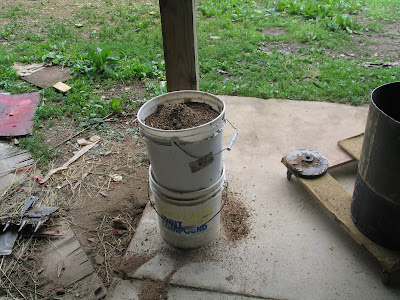We just rolled 300,000 miles on the Honda Odyssey. Every single mile was ours.
We bought the van new to replace our aging Chrysler van. Not too impressed with the amount of breakdowns it had, we were looking for a reliable vehicle (meaning Honda) and when they came out with the Odyssey in 1995, Mom knew right away that it was the right car. Dad said to wait a few years, let them get the bugs worked out. By 1998, we were at the dealership. Having done all the research and negotiations online (very unusual at the time), Dad managed to avoid haggling with the dealer - we walked in and paid the check. At the same time Dad got a Honda Civic 5-speed.

We moved to Colorado, and the van came with. We moved to Tennessee, and the van came with. We moved to Kentucky - still driving the van. At this point the Civic is long gone, replaced by a Chevy Suburban which can barely seat all of us. I have a Geo Metro now, which nobody wants to drive except me. So we still use the van to go everywhere. Most of the time the back seats are all out, and we haul musical instruments to gigs (upright bass, guitar, banjo, sound system). Or Dad goes to the post office with bookstore orders. Or the ladies go to Lexington...
The van has been extremely reliable all these years. There's no rust to my knowledge. It has had regular maintenance, first by the dealer and now by yours truly. We have had oil leaks at times. The crankshaft pulley has been replaced. A run-in with a deer very nearly totaled the van (we drove home, though). The exhaust manifold developed a crack, got replaced (and now I think it leaks a little). Then there's all the normal stuff; tires, batteries, oil changes, fuel.
So let's run the numbers, just for fun.
Initial cost: $24,954.70
Insurance: $6,491.56
Fuel* $23,667.58
Parts/Labor $7,169.49
Oil/filter (me) $120.61
Grand total: $62,403.94
That means:
Cost per mile (not including gas): $0.13/mile
Cost per mile including gas: $0.27/mile
Total cost per day: $13.08/day
Avg miles per day: 61.44
Some interesting conclusions here. A rental van costs $84/day, up to 150 miles thereafter adding $0.15/mile (not including gas). So we are way ahead on cost per day, but the cost per mile is only now starting to drop to the same level.
I keep the same numbers on the Metro, which is up to $2100.60 now. My cost per day is $4.97 (owned it for a year now), my cost per mile is $0.52 without gas, $0.59 with gas. Mostly because I have only got 3,400 miles on it so far. Cost per mile w/o gas should match the Odyssey about the 20,000 mile mark (assuming $500 more in maintenance at that point).
*
Fuel cost is approximated, based on the national average over the life of the car.




















